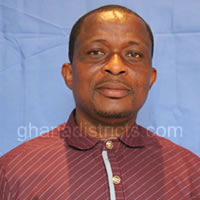Area and Location
The Municipal has a total land area of about 798 square kilometers (km2). It is located between latitudes 7o 35’ N and 7o 58’N and longitudes 2o 47’ W and 2o 78’W. It was established by the LI 1777 in 2004, following the split of the then Jaman District into Jaman North and South Districts. As indicated in figure 1.1, the Municipal shares borders with the Jaman North District in the North, Berekum West Distruct in the South-East, Dormaa Central Municipal in the South -West and La Cote D’Ivoire in the West.
Relief and Drainage
The relief of the Municipal is undulating: rises between 150 and 600 meters above sea level. The highest hills are located along Drobo and Bodaa, in the Southern and North eastern parts of the Municipal. These areas serve as sources of many rivers in the district.
On the other hand, the drainage pattern of the Jaman is largely dendritic which flows in a north-east and southern directions. Most of the rivers flow from the northern end of the district with a few of them including Atuna, Fetenta and Ntabene having their sources from southern Berekum and Dormaa Municipalities. The dendritic drainage and the relief system would serve as very good watershed which can be developed into irrigational facilities for the agricultural production in the District. Some of the rivers could as well be developed into Small Town Water facilities for domestic use.
Vegetation and Climate
The Municipality lies within the wet semi-equatorial region, with a mean annual rainfall ranging between 1,200 -1,780mm with double rainfall regime pattern. Its major rainy season occurs between April and June whiles the minor rains set in from September to October. The month of August experiences a short dry season, with a prolonged dry period occurring between Decembers and March. The average annual temperature is about 25°C. Relative humidity is also generally high between 70% and 80% during the rainy season.
There are two major types of vegetation in the Municipality. These are the semi-deciduous forest and savanna woodland. Parts of the original semi-deciduous forest have become secondary type of vegetation as a result of extensive lumbering and agricultural activities. This secondary type of forest is made up of shrubs and grasses with few original tree species such Odum, Wawa and Mahogany. The savanna woodland is located at the northern part of the Municipality where it shares boundaries with the Jaman North District and parts of La Cote D’Ivoire. It is characterized by elephant grass, shrubs and a few scattered trees ranging between 14m to 27m high.
Soils, Geology and Minerals
There are three main categories of rocks and two soil types which underlie the Municipality namely; Birimian, Buem and Dahomeyan rocks. Considering these rock types, the Birimian rocks are the mineral bearing rocks. Minerals found in the Municipality include: Gold at Yaamiasa, Atuna and Adamsu and Clay deposits also reported commercially at Dwenem. The Birimian rocks hold the potential for prospecting several minerals including gold, diamond and other precious stones.
The Municipal Assembly, in collaboration with the Traditional Authority has not given out any concessions. Despite these mineral deposits in the Municipality, mining activities are yet to be undertaken due to strong resistance from the local community people.
Date Created : 6/8/2023 12:00:00 AM





 facebook
facebook twitter
twitter Youtube
Youtube TOLL FREE 0800 430 430
TOLL FREE 0800 430 430 +233 593 831 280
+233 593 831 280 GPS: GE-231-4383
GPS: GE-231-4383 info@ghanadistricts.com
info@ghanadistricts.com Box GP1044, Accra, Ghana
Box GP1044, Accra, Ghana